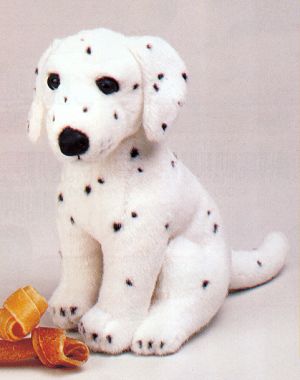You'll Totally Adore these Ornamental
Dalmatian Coffee Cups
Colorful and Decorative Dalmatian Dog
Mugs and Coffee Cups will look Simply Magnificent
hanging in your kitchen or setting on the Coffee table.
These Cheerful Dalmatian Mugs and Coffee Cups are more
Exciting to have around than a trip to the Ritz Hotel.
They are definitely proven to create lots of Pleasure and
Fun for you and Provide you with a Big Huge Sunny Smile on your face.

What a Wonderful Treat to get for yourself, or
they will make Awesome gift ideas for that special person
you Love and Care about.
Discover how much Fun drinking coffee really can
be
with these
Dalmatian Coffee Cups or Mug

Get Your Dalmatian Mugs Here
Lovable Stuffed Plush
Dalmatian Dogs & Animals

Delightful Dalmatian & Dog Calendars
The Dalmatian breed is a dog that was bred to run alongside
horse drawn carriages. They have a great deal of energy and
stamina because of this. They are an active breed that will
never be happy lying around all day doing nothing. They are
happy-go-lucky, loyal, playful and sensitive dogs. The
Dalmatian needs a strong human companion who knows how to
properly treat a companion dog.
The origin of the Dalmatian is controversial. They are
certainly a very old breed because there are ancient
Egyptian bas-reliefs and Hellenic friezes depicting them.
In the seventeen hundreds there was a dog breed known as the
Bengal Pointer that existed in England that was similar to
the modern Dalmatian. This calls into question the
Dalmatians' purported Yugoslavian origins.
Some believe that the breed actually originated in Croatia.
There has been effort put into recognizing the indigenous
Croatian dog breeds and in 1993 the FCI finally recognized
the Dalmatian as having Croatian origins. Croatian patronage
rights for the Dalmatian breed continue to be denied by
some, however.
The Dalmatian is a distinctive breed that many people can
easily spot because of its black and white spotted
appearance. The Dalmatian is a muscular, medium sized dog
that is symmetrical and has superior endurance. They have
clean lines like those of a pointer and a lean frame. The
feet are round, having well-arched toes and the nails can be
white or the same color as the spots.
The nose can be colored black, blue, brown or dark gray that
looks almost black. The eyes can come in colors of amber,
dark brown or blue, all with an intelligent look. The ears
narrow to a point and are soft carried with a slight upward
curve.
The Dalmatian's coat is dense, hard and short and comes in
colors of pure white base with black or liver colored spots.
The spots can be black, brindled, brown, dark blue, lemon,
sable, tri-colored or solid white. Solid white is
discouraged for a show dog. The more defined and well
distributed the spots the more value a puppy has. Spots are
not visible on a Dalmatian at birth, rather they develop
later.
Tippy & Alfred's Cheerful Pet Newsletter
All Dalmatian Gifts
Dalmatian Care Tips & Dalmatian Fun Stuff
Site Map
Page by: Tippy & Alfred
Copyright ©
Choose To Prosper


